Digital Printing: Transforming Design and Signage
Welcome to the world where digital printing is revolutionizing decor and signage. This innovative technology is not just a trend; it's a game-changer, offering new levels of creativity and flexibility. From eye-catching commercial spaces to personalized homes, digital printing is making its mark.In this article, we'll explore how digital printing stands up against traditional methods, its advantages in various settings, and key considerations for its use. Whether it's the stunning detail, the eco-friendly approach, or the cost-effectiveness, digital printing is changing the game in design.
Rodeo Dental's located in Houston Texas, their windows come alive with vivid rodeo-themed digital prints, turning heads on the street. These striking images, bursting with color and action, capture the essence of a lively rodeo, mirroring the dynamic and welcoming spirit of Rodeo Dental's services. More than just decor, these captivating visuals create a unique, memorable facade that draws in visitors, setting the stage for exceptional dental care with a touch of fun
Material Specifications and Outdoor Use
- Temperature Range for Outdoor Use :Digital prints, when properly treated, can withstand a wide range of temperatures. Typically, they can endure temperatures from approximately -20°C to 70°C. However, this can vary based on the ink type and the substrate material.
- Durability Against Breakage :The likelihood of breakage largely depends on the substrate used. For instance, digital prints on metal or acrylic are far more resilient compared to those on softer materials like canvas. The printing process itself doesn’t inherently weaken the material.
- Waterproofing Requirements : To make digital prints waterproof, especially for outdoor use, lamination is often necessary. The thickness of the lamination film can vary, but a standard range is between 75 to 250 microns. The choice of thickness depends on the expected exposure to elements and physical wear.
Pricing Comparison with Other Materials
- Material Cost :The cost-effectiveness of digital prints varies. For instance, digital prints on standard vinyl can range from $3 to $10 per square foot, depending on the complexity and ink usage. In comparison, traditional hand-painted signs might cost between $10 to $50 per square foot, based on the artist's skill level and materials used. Engraved metal signs can be even more expensive, ranging from $20 to $100 per square foot depending on the metal type and engraving details.
- Long-Term Considerations : While digital prints may have lower initial costs, long-term durability, especially outdoors, might incur additional expenses for protective treatments.
Size Limitations and Application Settings
- Size Limitations : The size of digital prints is usually constrained by the printer's capacity. Wide-format printers can produce large prints in one piece, often up to 5 feet in width and varying lengths. For larger signs, prints may be divided into sections and assembled.
- Indoor vs. Outdoor Suitability : Digital prints are well-suited for both indoor and outdoor settings. Outdoor signs require more durable materials and protective coatings to withstand weather and UV exposure.
- Handling Large Signs : For oversized outdoor signs, creating the print in sections can be a practical approach. This not only facilitates easier transportation and installation but also reduces the risk of damage during handling.
Longevity of Outdoor Digital Prints
- Survival Duration in Direct Sunlight : The lifespan of digital prints outdoors, especially under constant sun exposure, varies. On average, high-quality outdoor digital prints can last between 3 to 5 years before showing signs of fading. This can be extended with UV-resistant inks and proper lamination.
- Specifics for Houston, TX’s Climate : Houston's hot and humid climate poses challenges like intense UV exposure and moisture. With proper materials and protective measures, digital prints can maintain their integrity and color for several years. It’s advisable to use UV-resistant inks and robust lamination to combat the harsh sunlight and occasional heavy rains.
Digital printing revolutionizes interior decor and signage with its precision, versatility, customization capabilities, durability, and eco-friendliness. While it offers numerous advantages, considerations like material choice, protective treatments, and application setting are key to maximizing its benefits. This technology presents a cost-effective, durable, and adaptable solution, making it a favored choice in the modern design and signage landscape.

